The Nigeria Centre for Disease Control (NCDC) has continued to prioritise national health security through her leadership role in the implementation of international Health Regulations (IHR 2005) in Nigeria. Of particular importance is the coordination of implementation of the National Action Plan for Health Security (NAPHS) which was developed in 2018. The NAPHS is a five-year roadmap developed to address critical gaps identified following the Joint External Evaluation (JEE) which was carried out in 2017. It was developed in collaboration with relevant Ministries, Departments and Agencies (MDAs) of the FGN, World Health Organisation (WHO) and other key development partners.
The NAPHS has 19 technical areas with over 600 activities. Part of our efforts towards monitoring implementation of the NAPHS was the mid-term JEE conducted in 2020. Similarly, the NCDC also conducted from 9th -10th June, 2021 a two-day self -assessment workshop aimed at supporting technical areas to update their implementation status and score themselves. With these, Nigeria remains one of the few countries to have carried out these assessments.
Further, to validate the afore-mentioned self–assessment, the NCDC in conjunction with partners also held a three-day national workshop from 21st – 23rd June, 2021 with the following objectives:
1. Conduct high level strategic review meeting on the implementation of the NAPHS in Nigeria.
2. Update the monitoring and evaluation plan for NAPHS in Nigeria.
3. Validate the NAPHS Monitoring and Evaluation, and resource mapping data outcome for Nigeria.
Aside the participants across the 19 technical areas, the workshop was also well attended by diverse players in the areas of IHR implementation as well as representatives from the Federal Ministry of Health, Ministry of Agriculture and Rural Development, Ministry of Finance, Office of the National Security Adviser etc.
The event was supported by the WHO Regional Office for Africa (WHO AFRO) and the World Bank through the Regional Disease Surveillance System Enhancement (REDISSE) project. Key outputs from the workshop were validated M&E data, better coordination across sectors; with solution proffered to challenges affecting smooth implementation across different technical areas. The critical next step is to develop a workshop report to inform further implementation of activities in the NAPHS ahead of the final JEE.
We are grateful to the WHO (including the external evaluators), the World Bank REDISSE project and other development partners for supporting this exercise. We also appreciate the unprecedented efforts of all technical leads without which the current progress would not have been possible.
As the national focal point for IHR implementation in Nigeria, NCDC remains committed to fulfilling its obligations in ensuring national health security.
Summary of Incidents
Notes
1. Information for this disease was retrieved from the Technical Working Group and Situation Reports
2. Case Fatality Rate (CFR) for this disease is reported for confirmed cases only
3. Information for this disease was retrieved from IDSR 002 data
4. CFR for this disease is reported for total cases i.e. suspected + confirmed
5. Information for sentinel influenza was retrieved from the laboratory
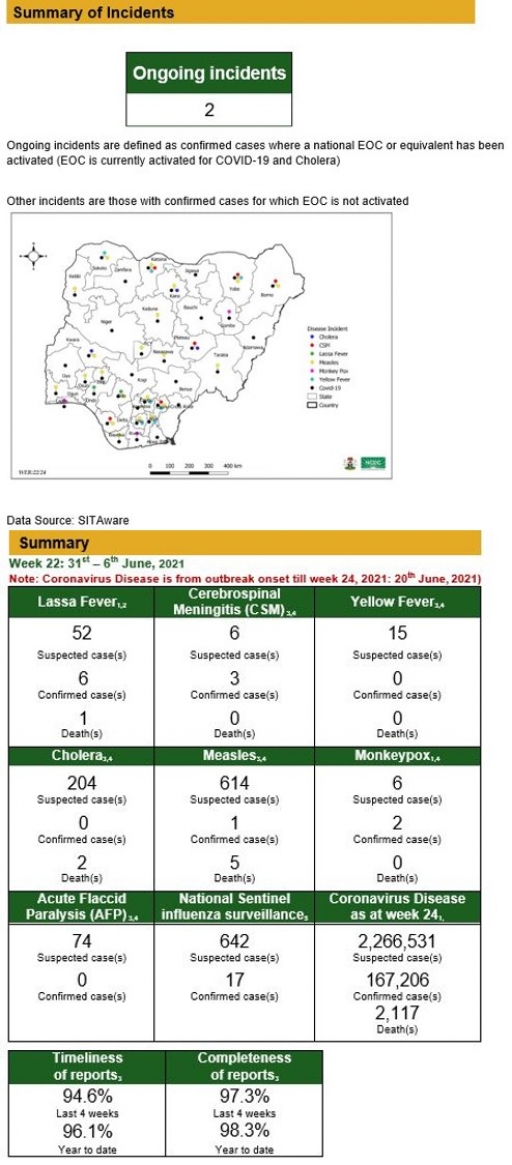
Lassa Fever
Key points
â— There were 52 suspected cases, six were laboratory confirmed and one death was recorded from five LGAs in two states
Actions
To date:
â— Conducted 2021 Lassa fever (LF) high burden states preparedness/response engagement meeting
â— Dissemination of reviewed case management and safe burial practices guidelines
â— Ensured all five LF molecular laboratories in the NCDC network are working at full capacity for timely testing of samples with reduced turnaround time
Planned:
â— Finalise LF five-year strategic plan
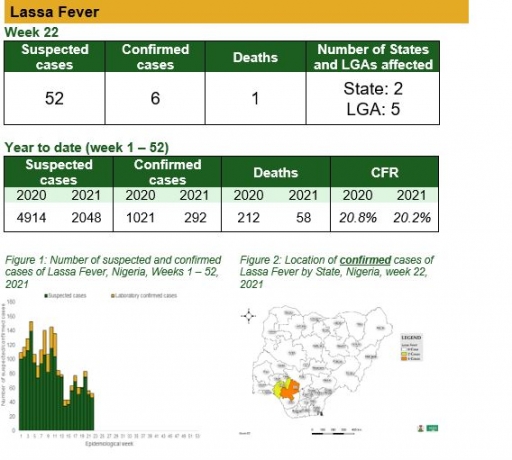
Cerebrospinal Meningitis (CSM)
Key points
◠There were six suspected cases of cerebrospinal meningitis (CSM) reported from six LGAs in five states (Borno – 1, Delta – 1, Ebonyi – 2, Katsina – 1 & Plateau – 1). Three cases were laboratory confirmed and no death was recorded.
Actions
To date:
â— National CSM TWG meets weekly to review reports from states and plan appropriately
â— Enhanced surveillance in all states
Planned:
â— Continue harmonisation of the national line list and SORMAS data
â— Continue to ensure that states reporting cases send their line lists and collect CSM samples
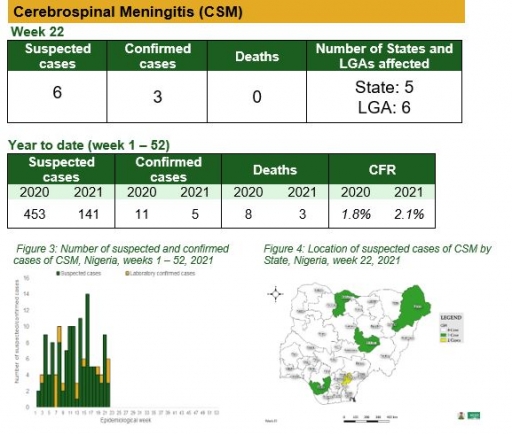
Yellow Fever
Key points
â— There were 15 suspected cases of Yellow Fever (YF) reported from 14 LGAs in 7 states. None were laboratory confirmed and no death was recorded
Actions
To date:
â— National YF multi-partner Technical Working Group (TWG) continues to coordinate activities across states.
â— Ongoing plans to strengthen orientation of at-risk states on YF surveillance
â— Ensured availability of reagents and consumables in all testing laboratories
Planned:
â— Continue monitoring and analysis of YF (Yellow fever) data across all states and FCT to guide response
â— Continue coordination of prompt transportation samples to the laboratories
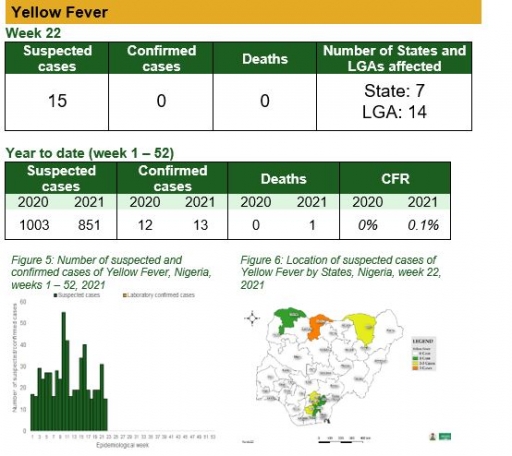
Cholera
Key points
◠There were 204 suspected cases of cholera reported from 27 LGAs in three states (Kano – 74, Kwara – 26 & Plateau – 104). None were laboratory confirmed and two deaths were recorded
Actions
To date
â— National Cholera Multi-Sectoral Technical Working Group (TWG) is monitoring all states and supporting affected states
◠National Rapid Response Teams (RRTs) with response commodities were deployed to support the response in four states – Benue, Kano, Kaduna and Zamfara States
â— Cholera jingles being aired in English and local languages across the country
Planned:
â— Continue follow up and monitoring of non-reporting states
â— Build capacity for sample collection, transportation, and laboratory diagnosis across states
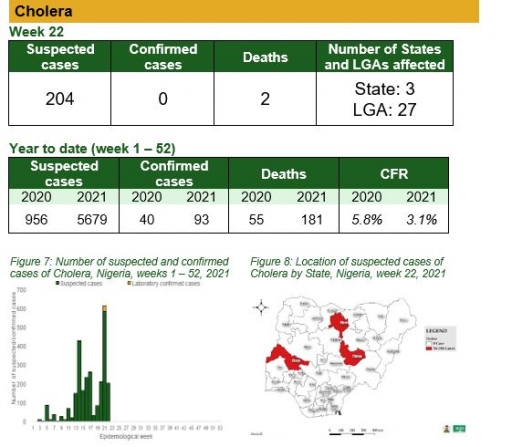
Measles
Key points
â— There were 614 suspected cases of Measles reported from 93 LGAs in 20 states & FCT. One case was laboratory confirmed and five deaths were recorded
Actions
To date
â— National Measles TWG is closely monitoring measles surveillance data and providing feedback to relevant agencies and development partners
â— Ongoing weekly surveillance and laboratory data harmonisation
Planned:
â— Intensify follow up with states to update and transmit line list
â— Continue monthly measles surveillance data review

Monkeypox
Key points
◠There were six suspected cases of Monkeypox reported from five LGAs in three states (Gombe – 1, Lagos -2 & Rivers – 3). Two case was laboratory confirmed and no death was recorded
Actions
To date
â— Enhanced Surveillance ongoing in Rivers, Delta and Bayelsa States
â— National Monkeypox Technical Working Group (TWG) is monitoring activities in all states
Planned:
â— Enhance surveillance for monkeypox in high burden states
â— Continue harmonisation of the national line list and SORMAS data

Acute Flaccid Paralysis (AFP)
Key points
â— There were 74 suspected cases of AFP reported from 67 LGAs in 21 states and FCT. None were laboratory confirmed and no death was recorded.
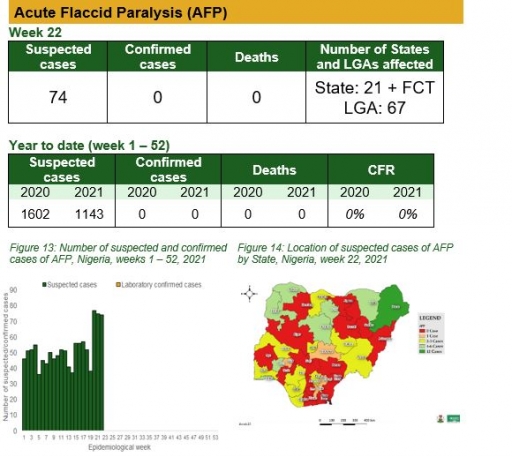
National Influenza Sentinel Surveillance
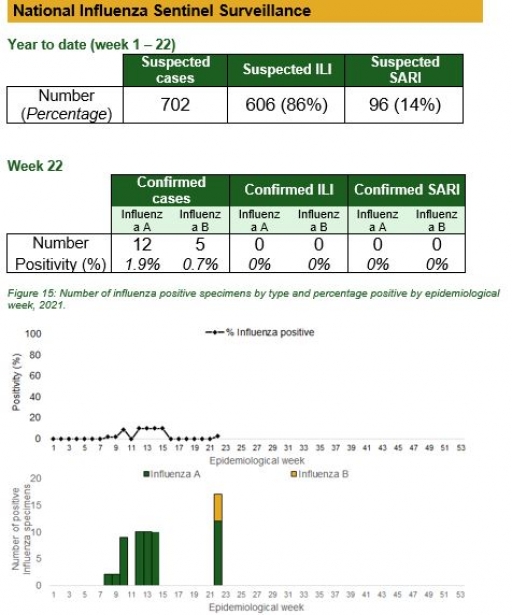
Coronavirus Disease (COVID-19)
Actions
To date:
â— National COVID-19 multi-partner Emergency Operations Centre (EOC) continues to coordinate response activities across states
â— Engaged with states to ensure regular reporting and response continuity
â— Ongoing enhanced surveillance at points of entry
â— Conducted Training of Trainers (ToT) on the appropriate and safe use of approved Ag-RDTs for COVID-19 diagnosis for states in the South-West zone
Planned:
â— Deploy antigen-based rapid diagnostic test (Ag-RDT) kits and sample collection materials to the selected states
â— Intensify genomic surveillance activities
â— Conduct WASH (Water, Sanitation and Hygiene) assessment across all health facilities
â— Finalise Local Government Area (LGA) / State transmission categorisation
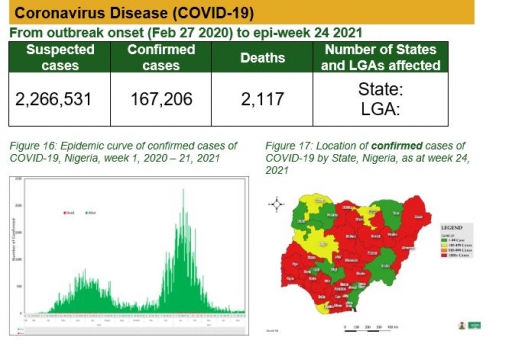
Timeliness and Completeness of Reports
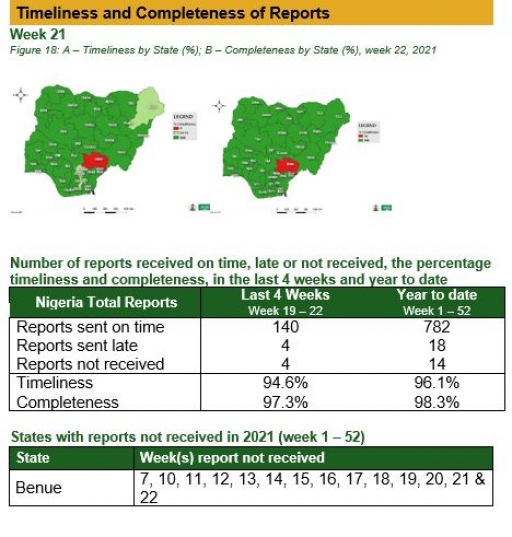
Timeliness and Completeness of Reports by State
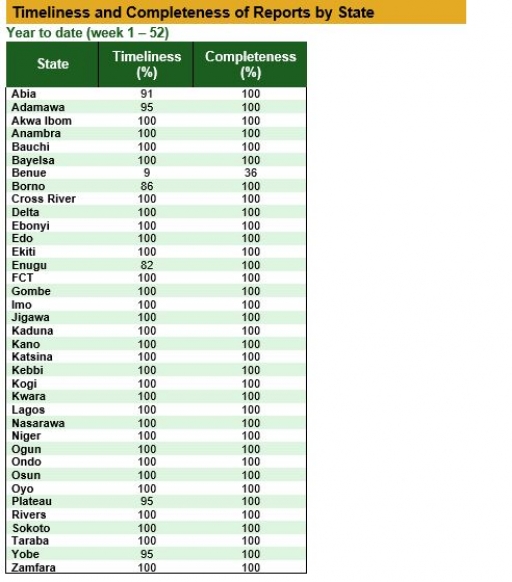














 Toll Free Number: 6232
Toll Free Number: 6232 Whatsapp: +234 708 711 0839
Whatsapp: +234 708 711 0839 SMS Number: +234 809 955 5577
SMS Number: +234 809 955 5577 